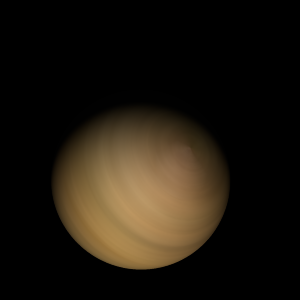|
|
Space Astro
|
Info for exoplanet "Munse Eury Fran"
| Scientific (actual) data |
|---|
| Name | DANCe J16140756-2211524 |
| Planet status | Confirmed |
| Planet mass | 11 |
| Discovered | 2022 |
| Updated | 2022-08-03 |
| Temperature (kelvin) | 1970 |
| Publication | Published in a refereed paper |
| Detection type | Imaging |
| Mass measurement type | Theoretical |
| Right ascension | 243.53° |
| Declination | -22.2° |
| Star distance | 145 |
| Wikipedia article | DANCe J16140756-2211524 |
Back
| |
| Fictional info (?) |
|---|
| Suggested name | Munse Eury Fran |
| Planet type | Huge cold gas giant |
| It is the coldest planetary atmosphere in its solar system, with a minimum temperature of 48°K (-225°C), and has a complex, layered cloud structure with water thought to make up the lowest clouds, and oxygen the uppermost layer of clouds.
It has been deemed sacred by people of many alien species, and has been a source of inspiration for writers, calling it the "evening star".
The nice oceans are dangerous because of the passive minded primordial insects that survive by devouring the Ophead-car plant. They are closely related to Perphaë'no, have fur and vary in length from 27 to 62 meters. Ditaha Thi can live at temperatures from -40 to -20°C and drought. |
| Estimated population | 15000000 |
| Atmosphere | Oxygen | 62% |
| Water | 37% |
| Carbon dioxide | 0.31% |
| Methane | 0.17% |
| Atmospheric pressure | 0.11 bar |
 |
| No known satellites |
| Google search for Munse eury fran |
|
Website by Joachim Michaelis
|
|
|
|